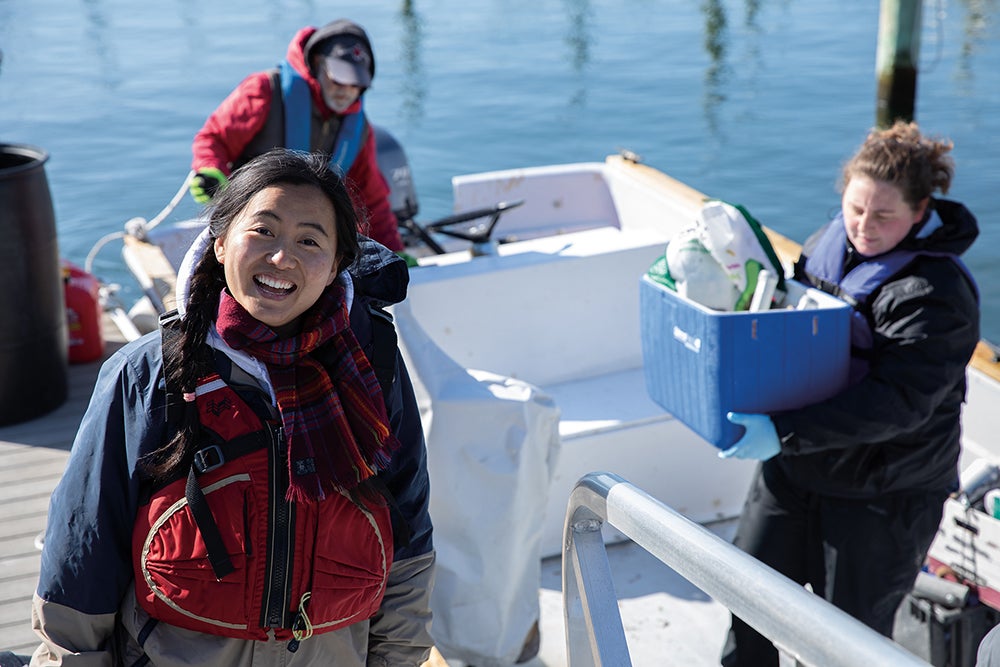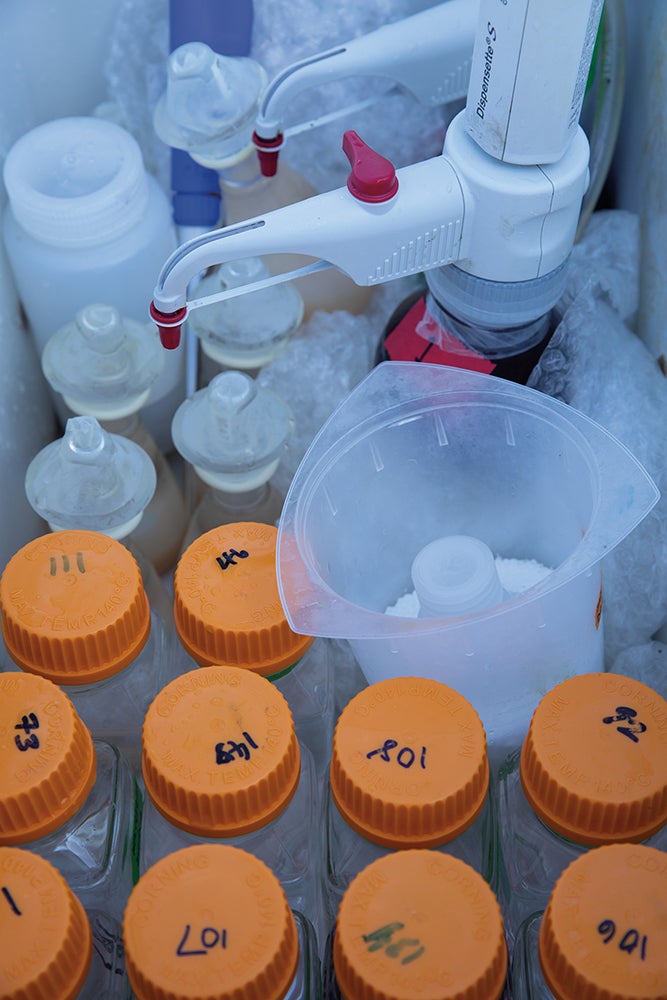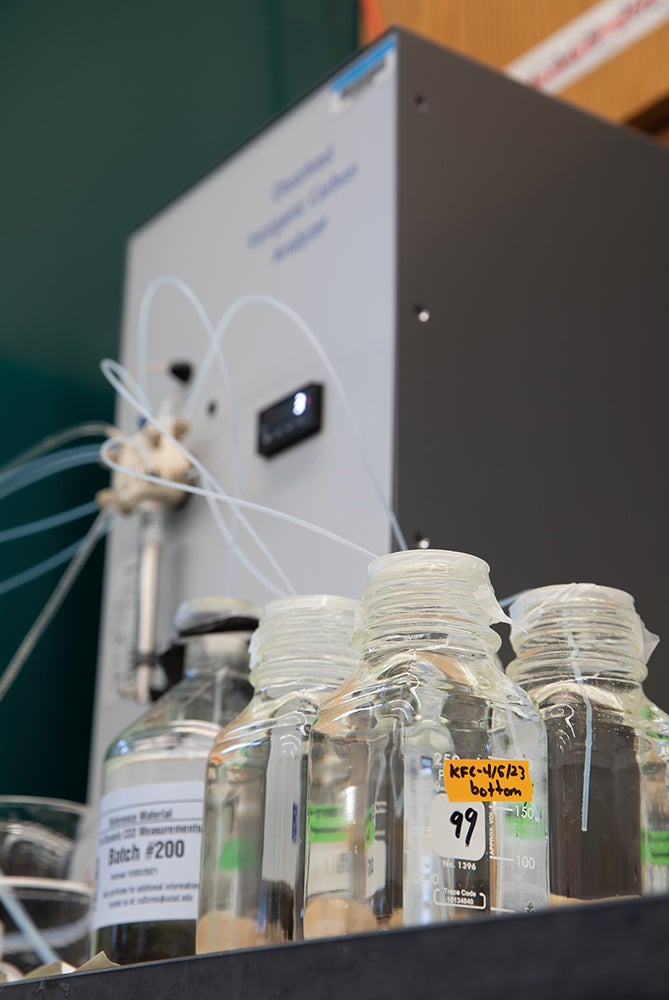The ocean is expected to be 150 percent more acidic by the end of the century. Every day, about 22 million tons of carbon dioxide from human activities, such as burning fossil fuels, deforestation, and pollution runoff, are absorbed by the ocean with more acute effects felt near the coasts, according to the Global Carbon Budget project.
Known as “climate change’s evil twin” and sometimes referred to as the “osteoporosis of the sea” by the National Oceanic and Atmospheric Administration (NOAA), ocean acidification decreases the water buffer capacity, so the ocean water is losing the ability to maintain a stable pH. More importantly, ocean acidification also deprives water of the carbon needed by many marine organisms for building skeletons and shells. This presents a whole host of issues that threaten marine ecosystems and compromises food security, livelihoods, and public health.
With interest growing from the global research community in cultivating seaweed to offset ocean acidification impacts, researchers at the University of Rhode Island (URI) are leading a pilot project supported by Bigelow Laboratory for Ocean Sciences, the U.S. Department of Agriculture (USDA), and NOAA.
“People are assuming that kelp could be a natural ocean acidification mitigation approach, or even an important carbon dioxide removal approach, and I’m going to see if that potential is robust enough,” says Hongjie Wang, a biogeochemist and assistant professor of oceanography at URI’s Graduate School of Oceanography. Her team is investigating the potential of sugar kelp in removing carbon dioxide from surrounding waters.

Wang runs the University’s Ocean Carbon Lab which focuses research efforts on better understanding the drivers and impact of ocean acidification, as well as ocean-based carbon-dioxide removal approaches, such as macroalgae cultivation.
Macroalgae, such as sugar kelp, uptake excess carbon dioxide in marine systems. This species, native to the Northeast, is of particular interest because it prefers colder water and grows fast.
“People are assuming that kelp could be a natural ocean acidification mitigation approach, or even an important carbon dioxide removal approach, and I’m going to see if that potential is robust enough.”Hongjie Wang
“It can grow around two centimeters a day,” says Wang. “And because sugar kelp can grow so quickly, it should have some impact on the water acidity.” Wang and her lab have been working with Point Judith Kelp Company to determine the potential of kelp in mitigating the rapid local ocean acidification during the growing season. URI master’s student Fiona Teevan-Kamhawi has been monitoring two sensors deployed at the start of the growing season in December to develop a baseline of environmental parameters, which will determine the extent of changes they will see up to the kelp harvest in May.
The sensors measure temperature, chlorophyll, salinity, pH, and partial pressure of carbon dioxide every 30 minutes. The data is relayed back to the phone of Teevan-Kamhawi, who also visits the site for weekly samples to calibrate the sensors.
“We will be looking at the net removal of carbon based on the difference between the control sensors, which are outside of the kelp farm, and the sensors inside the farm,” says Teevan-Kamhawi. “We will also be sampling beyond the harvest date to see how widespread the effects will be.”


Although Wang says she expects to see local water acidity reduce as the kelp grows, she notes that this process does not reflect a net removal of carbon dioxide by the sugar kelp farm.
“This project is looking at the capacity of short-term reductions on water pH,” she says, explaining that the kelp on this particular farm will be sent to restaurants for consumption. “If we eat kelp, we just release that CO2 right back. So, we don’t really have a net CO2 removal.”
However, if used for livestock feed, kelp could potentially reduce methane (another powerful greenhouse gas) produced by cows. The project will help kelp farms understand their impact on the local water acidity. If Wang’s hypothesis holds, it could have potential positive implications for shellfish farms, for example, and seaweed cultivation could be a potential solution to mitigate rapid ocean acidification in coastal regions.
“Not all shellfish species are equally susceptible to ocean acidification, but many of them are. It appears that the oysters are most sensitive at the larval phases,” says Nichole Price, director for Bigelow’s Center for Seafood Solutions, who is overseeing additional pilot projects nationwide to understand the vast utility and co-benefits of growing kelp and seaweed.
After comprehensively analyzing all field-sourced data, Wang and Teevan-Kamhawi discovered that kelp serves a dual purpose: it not only acts as a valuable food resource but also potentially provides a more buffered pH environment.
“The promise of growing seaweed alongside shellfish is that it can locally change and buffer those conditions,” says Price. “While the question of whether or not seaweed aquaculture can contribute to carbon sequestration or removal of carbon from the global system is still at large, at least the kind of research that Wang is doing now can answer some questions about the rates of CO2 uptake by a seaweed farm.”
Furthermore, findings from this project will be used to guide Congress on where research funding should go, says Price, who hopes more projects like this will be supported in the future.
After comprehensively analyzing all field-sourced data, Wang and Teevan-Kamhawi discovered that kelp serves a dual purpose: it not only acts as a valuable food resource but also potentially provides a more buffered pH environment — a form of shelter — for marine species grappling with ocean acidification due to climate change.
However, it’s crucial to understand that the potential of kelp to mitigate some effects of ocean acidification is primarily at a local scale and spatially limited. While the preservation or cultivation of kelp can contribute to a solution, broader strategies aimed at reducing CO2 emissions remain necessary to effectively combat climate change and ocean acidification.
